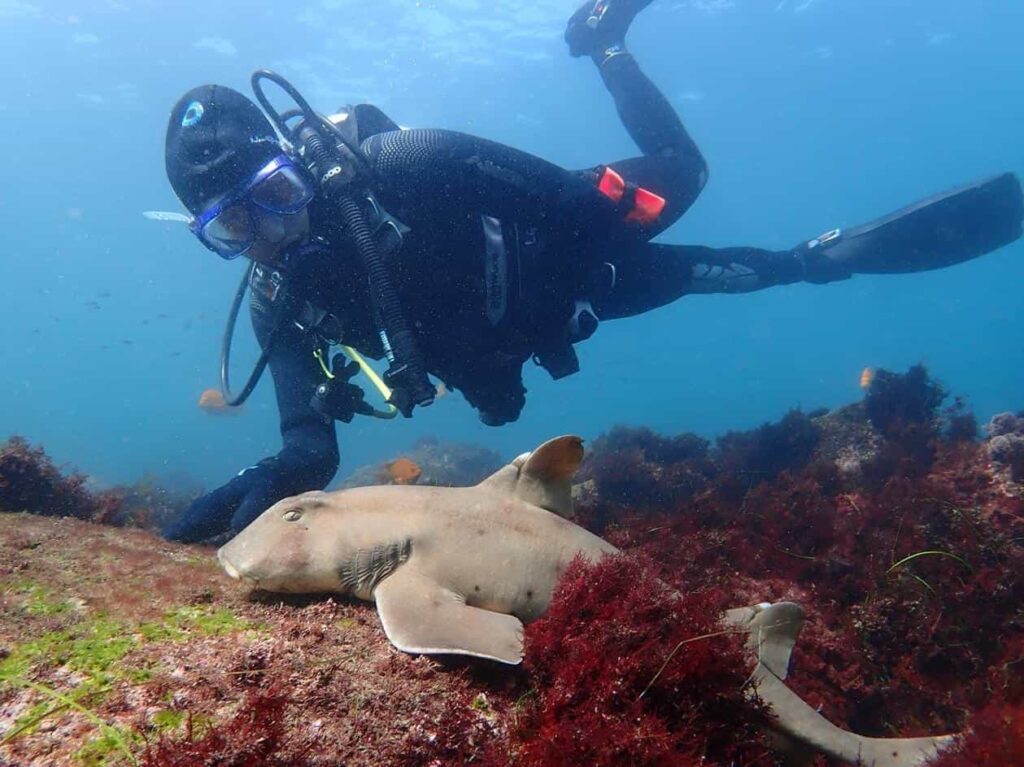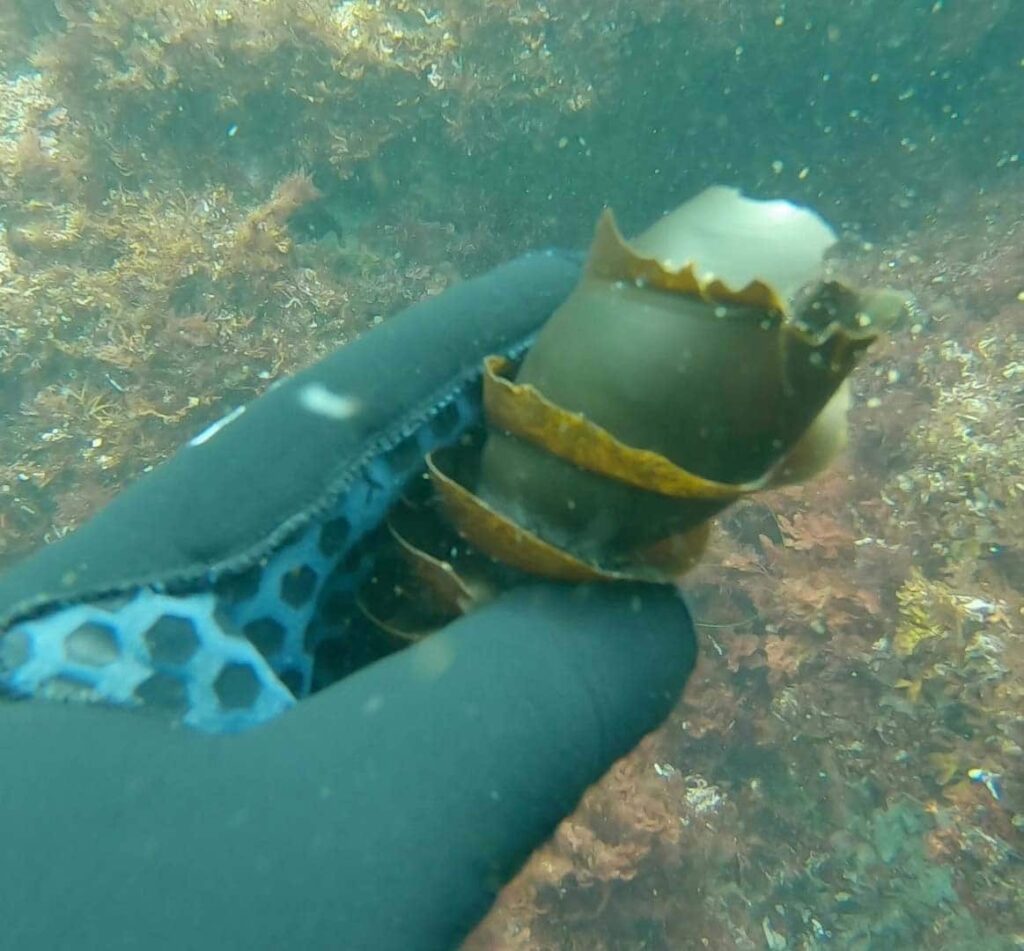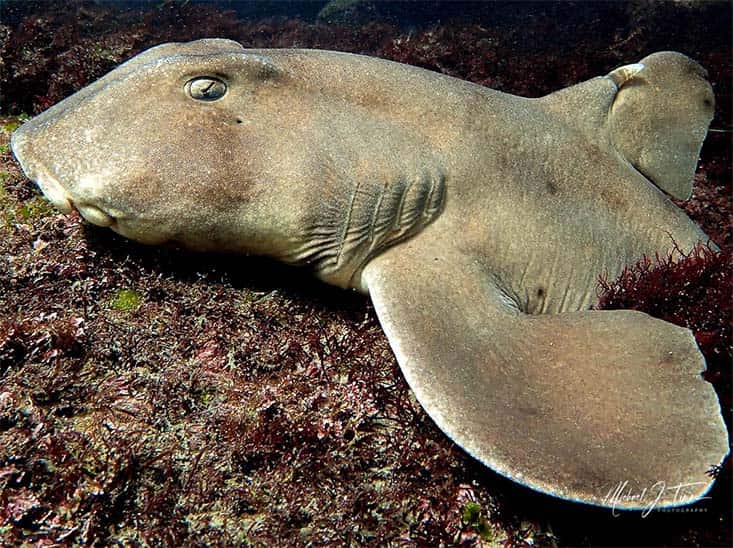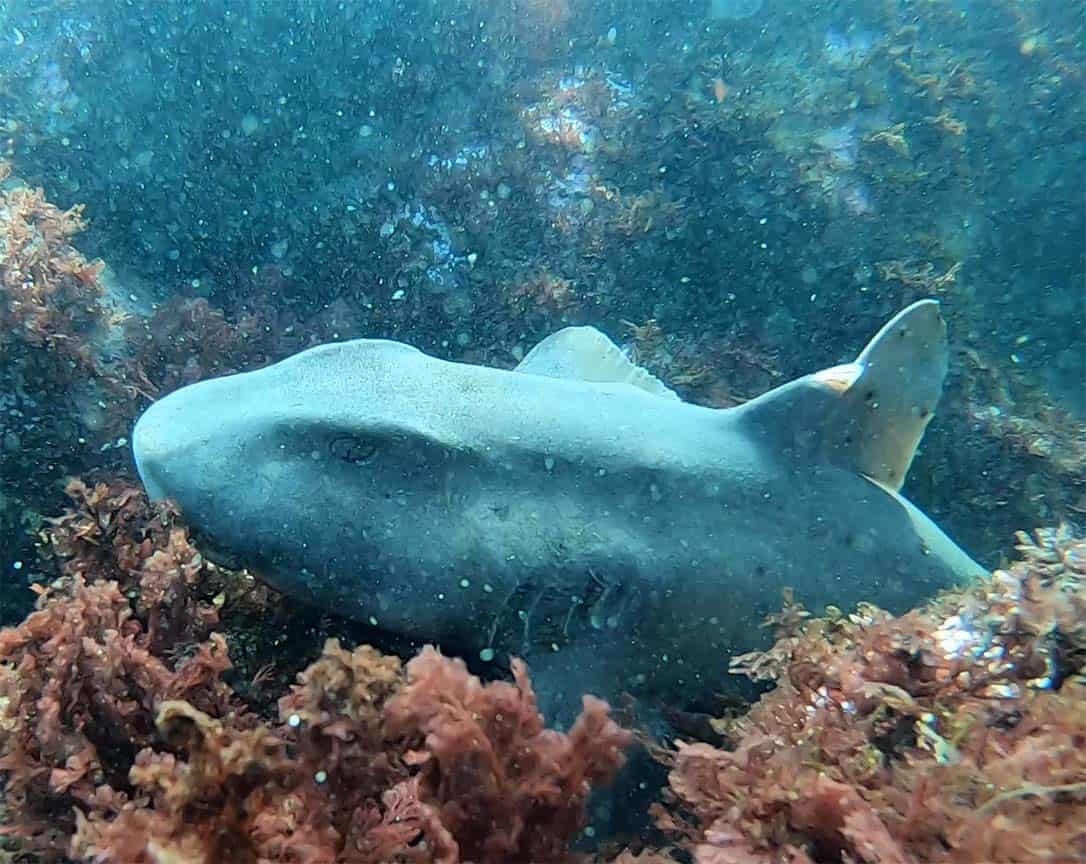Why You Should Adore Horn Sharks
You can spot a variety of different sharks when you go diving or snorkeling in La Jolla, but the most common shark you’ll find is the horn shark.
There are quite a few contenders for the title of “California’s cutest shark,” but Dive California thinks that the horn shark is indisputably the cutest shark of the shoal. (Don’t you just want to pinch their wittle cheeks??)
Let’s break down the 10 reasons why horn sharks are so adorable.
[Editor’s Note: Please do not try to pinch or cuddle horn sharks. They do not like to be touched and will probably bite you if you try.]

1. Horn Sharks are Pretty Small
Small is cute, which probably explains our gushing over horn sharks.
Horn sharks are one of the smallest sharks that we get in California waters, even smaller than leopard sharks.
- Adult Horn Sharks: 3.3 to 3.9 feet (100 to 120 centimeters)
- Newborn Horn Sharks: 5.9 to 6.7 inches (15 to 17 centimeters)
The horn shark belongs to the order of bullhead sharks. Most bullhead sharks are small reef-dwellers that don’t pose much of a threat to humans–and not even larger fish.
You might think the name is pretty ironic. Doesn’t the term “bull” conjure up the image of a big and imposing animal?
Bullhead sharks do have features that you’ll find on a male cow, like protruding nostrils and thick ridges over the eye. But they don’t share the bull’s size or temperament.
You can find different species of bullhead shark around the globe. Here in California, we have the horn shark. You can only find the horn shark on the west coast of North America, from Monterey Bay to the Sea of Cortez in Baja.

2. Horn Sharks are Introverts
Horn sharks spend most of their time alone. They live near each other in rocky reefs and kelp forests, but they don’t socialize very much. They prefer to hang out by themselves.
But even introverts have their extraverted moments. Horn sharks become social animals [literally] during their annual mating season. During the mating season, horn sharks gather at shallow reefs in huge numbers and the males show their interest by chasing the females. [Shark mating behavior is complicated and not fully understood.]
At La Jolla Cove, horn shark mating lasts from mid-February to mid-March. If you’re a scuba diver or freediver, this is undoubtedly the best time to find horn sharks. In some parts of the reef, you can’t swim more than 10 feet without finding a horn shark passed out in the algae. [Their nightly mating rituals leave them pooped.]

3. Horn Sharks Care About Their Eggs
Horn sharks are one of the few shark species to show parental care. Whales, pinnipeds, and many species of fish protect and nurture their offspring. But that behavior is unusual for sharks. Most sharks abandon their pups or their eggs as soon as possible.
The horn shark does not. The mother horn shark finds a suitable place to hide each of her eggs so they’re not discovered by predators or carried off by strong currents.
Horn sharks lay beautiful, spiral eggs. The spiral shape enables the mother to screw them into crevices in the reef. By hiding her eggs in such a way, the mother is going to some lengths to boost her offsprings’ chances of survival.
A little more about horn shark eggs:
- Female horn sharks lay up to 24 eggs; 2 at a time, once every 11 to 14 days
- Eggs are usually laid between 6 and 40 feet deep
- Horn sharks wedge the eggs by picking them up in their mouths (their suction capabilities are a big help)

4. Baby Horn Sharks are Tough
Horn sharks don’t have to do much hunting when they’re freshly hatched. The babies are born with yolk sacs inside their bodies so they don’t have to forage for food until they’re a month old.
For reasons we have yet to understand, horn sharks are segregated by age.
The youngest horn sharks live in deep sand flats, from about 100 to 500 feet. As they get older, they slowly move closer to shore and live in increasingly shallow depths. Mature horn sharks live in shallow reefs in under 30 feet of water.
Sadly, that means baby horn sharks live in a pretty harsh environment that leaves them highly exposed to predators.
Thankfully, horn sharks have an effective defense mechanism. They’re equipped with a sharp spine on each of their two dorsal fins. The spines make for excellent weapons.
Scientists have observed a baby horn shark getting swallowed whole by a large predator–only to be spit out a couple seconds later. The baby horn shark used its spines to stab the inside of the predator’s mouth.
Baby shark, do-do, do-do, do-do!

5. Horn Sharks Age Like Humans
Younger horn sharks are brown and have very noticeable spots. As they get older, they turn grayish and their spots become less visible. They turn grey just like people do!
Based on their size, color, and the depth at which they’re living, you can generally guess a horn shark’s maturity. But it’s difficult to estimate the exact age because we don’t actually know how long horn sharks live in the wild. In aquariums, horn sharks can live up to 25 years.
Based on their aquarium lifespan, scientists believe wild horn sharks may live anywhere between 12 and 25 years. But that’s just a wild guess.

6. Horn Sharks Go on Vacation
If you live somewhere that actually has seasons (unlike those of us here at Dive California) then you might enjoy taking a winter vacation to warmer climates so you can escape the snow and freezing temperatures.
Horn sharks do exactly the same thing in the winter months. Every winter, the horn sharks migrate to deeper water, where it’s warmer.
The shallow water at the surface of the ocean is more exposed to the weather and cools faster than deeper water.
So, horn sharks make an annual migration to their cozy vacation homes in the deep. Most horn sharks will migrate deeper than 100 feet (30 meters). But some horn sharks have been found as deep as 660 feet (220 meters) residing in caves.
7. Horn Sharks Enjoy Their Seafood Appetizers
When you eat at a seafood restaurant, you might order a few appetizers like mussels, crab legs, or a shrimp cocktail.
Horn sharks eat the very same food!
Horn sharks typically feed on:
- Crabs
- Shrimp
- Clams, oysters, and other mollusks
- Sea stars
- Peanut worms
- Anemones
- Sea urchins
- Mollusks
- Polychaeta worms (preferred by juveniles)
During the winter, they’ll also scavenge the bodies of market squid (thousands of squid come to the shallows to mate, and die shortly after–leaving their bodies strewn over the sand).
You might have noticed that horn sharks enjoy eating things that have hard shells. Shells are no problem for the horn shark. It has the strongest bite force of any shark, relative to its size. For the poor mollusks, shells offer little protection from horn sharks.

8. Horn Sharks Hunt with Vacuum Cleaners
The horn shark uses suction to vacuum prey into its mouth. The mouth is designed to retract in such a way that it creates an inward flow of water.
When the prey gets sucked into its mouth, the horn shark secures the prey with its front teeth and then grinds the prey with its back teeth.
You’ll rarely see horn sharks hunting during the daytime. They’re nocturnal animals and prefer to feed at night.
Horn Shark Teeth:
- Upper Jaw: 19 to 26 rows of teeth
- Lower Jaw: 18 to 19 rows of teeth
- Teeth Near Front of Jaw: Small and Pointed
- Teeth Near Back of Jaw: Larger and elongated, molar-like
Fun Fact: The horn shark can extend its upper jaw by 15% to scrape prey off the rocks, like a chisel.

9. Horn Sharks Think They’re Great at Hiding
Horn sharks rest during the day. When you go diving at La Jolla Cove, you can find them hiding in thick patches of algae or inside the reef’s crevices.
Horn sharks abide by the following logic: if I can’t see you, then you can’t see me.
Alas! Our eagle-eyed dive guides spot them pretty regularly. Thankfully, we aren’t predators. We gush and take their pictures, and leave them be.

10. Horn Sharks are Chill Around Humans
One of the most common questions we get is “Are horn sharks dangerous to humans?”
The short answer: No, horn sharks pose no risk to swimmers, snorkelers, or divers.
Generally speaking, horn sharks can be approached without too much caution. Most of the time, they’ll remain calm and motionless while you’re observing them.
However, horn sharks can be provoked into biting.
They can deliver a strong and painful bite if they feel threatened by you, or they could stab you with one of their dorsal spines. These attacks can cause serious injuries, and can even result in a life-threatening infection.
Remember these tips whenever you encounter a wild animal underwater:
- Keep a safe and respectful distance (in the case of horn sharks, try to stay an arm’s length or more); be careful diving in any place where there’s a surge, because the surge could cause you to accidentally bump the animal
- Don’t try to feed the animal (unless you’re willing to lose one or more fingers)
- Keep your hands to yourself
- Avoid sudden movements (a sudden movement may startle a horn shark)
If you follow these rules, you’ll see that horn sharks are super chill animals. They’re Californian, after all.
Horn Shark Conservation
Horn sharks have no commercial value in California, but they’re accidentally captured in trawls and traps cast by commercial fishing boats.
This accidental capture is known as “bycatch.” Most animals that are caught as bycatch will die before they’re freed from the fishing nets. Horn sharks are often a product of bycatch, and they’re intentionally fished in parts of Baja California.
The International Union for Conservation of Nature (IUCN) does not have enough information about horn shark populations to determine the shark’s conservation status (in other words, it can’t determine whether their population is stable, threatened, or endangered).
You can raise awareness about horn sharks by going diving with them, taking pictures, and sharing your photos and experiences with people you know.
Sharks take a long time to reach reproductive age. For that reason, it’s very difficult to rebuild their populations when they’ve been diminished by irresponsible fishing or environmental degradation.
Sharks are a top predator and play a vital role in the health of our oceans. We can protect them by:
- Introducing stronger global bans on shark fin trading
- Implementing tighter regulations on fisheries
- Supporting marine protected areas, politically and through tourism dollars
- Supporting legislation that reduces carbon emissions
Check out the following resources if you want to get involved in shark conservation:
- California State University Long Beach – Shark Lab
- SJSU Pacific Shark Research Center
- Pelagic Shark Research Foundation
- Shark Research Institute
- Oceana
- Shark Stewards
- Shark Angels
- Sea Shepherd
- Project Aware
- Predators In Peril
- IUCN SSC Shark Specialist Group
- Shark Research Institute
- Shark Friendly Marinas
Save the Sharks & Protect the Ocean!



